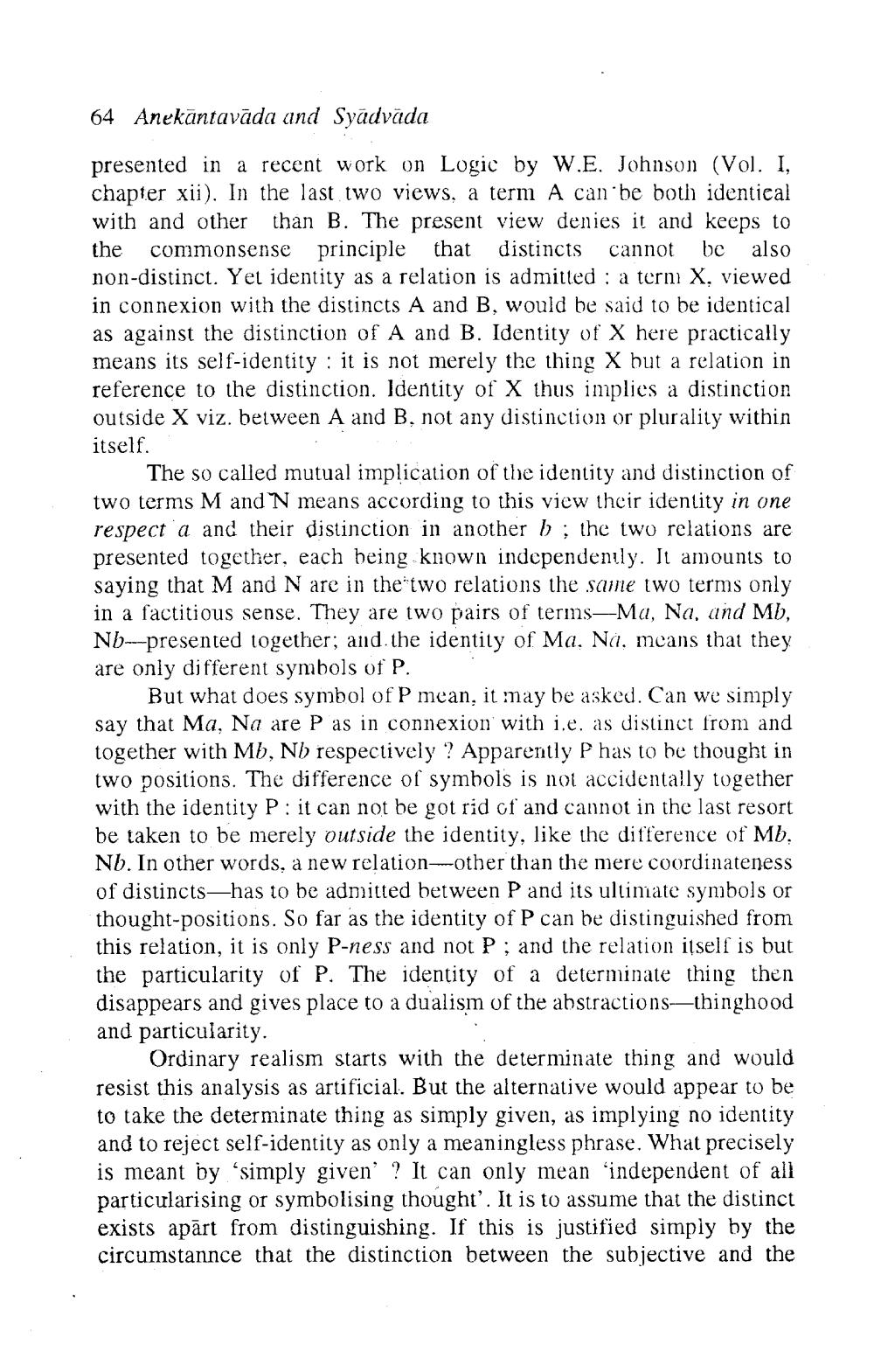________________
64 Anekantavāda and Syâdvada
presented in a recent work on Logic by W.E. Johnson (Vol. I, chapter xii). In the last two views, a term A can be both identical with and other than B. The present view denies it and keeps to the commonsense principle that distincts cannot be also non-distinct. Yet identity as a relation is admitted : a term X, viewed in connexion with the distincts A and B. would be said to be identical as against the distinction of A and B. Identity of X here practically means its self-identity : it is not merely the thing X but a relation in reference to the distinction. Identity of X thus implies a distinction outside X viz. between A and B. not any distinction or plurality within itself.
The so called mutual implication of the identity and distinction of two terms M and N means according to this view their identity in one respect a and their distinction in another b; the two relations are presented together, each being known independently. It amounts to saying that M and N are in the two relations the same two terms only in a factitious sense. They are two pairs of terms-Ma, Na, and Mb, Nb-presented together; and the identity of Ma. Na, means that they are only different symbols of P.
But what does symbol of P mean, it may be asked. Can we simply say that Ma, Na are P as in connexion' with i.e. as distinct from and together with Mb, Nb respectively? Apparently P has to be thought in two positions. The difference of symbols is not accidentally together with the identity P: it can not be got rid of and cannot in the last resort be taken to be merely outside the identity, like the difference of Mb. Nb. In other words, a new relation-other than the mere coordinateness of distincts—has to be admitted between P and its ultiniate symbols or thought-positions. So far as the identity of P can be distinguished from this relation, it is only P-ness and not P; and the relation itself is but the particularity of P. The identity of a determinate thing then disappears and gives place to a dualism of the abstractions—thinghood and particularity.
Ordinary realism starts with the determinate thing and would resist this analysis as artificial. But the alternative would appear to be to take the determinate thing as simply given, as implying no identity and to reject self-identity as only a meaningless phrase. What precisely is meant by 'simply given? It can only mean “independent of all particularising or symbolising thought. It is to assume that the distinct exists apārt from distinguishing. If this is justified simply by the circumstannce that the distinction between the subjective and the




